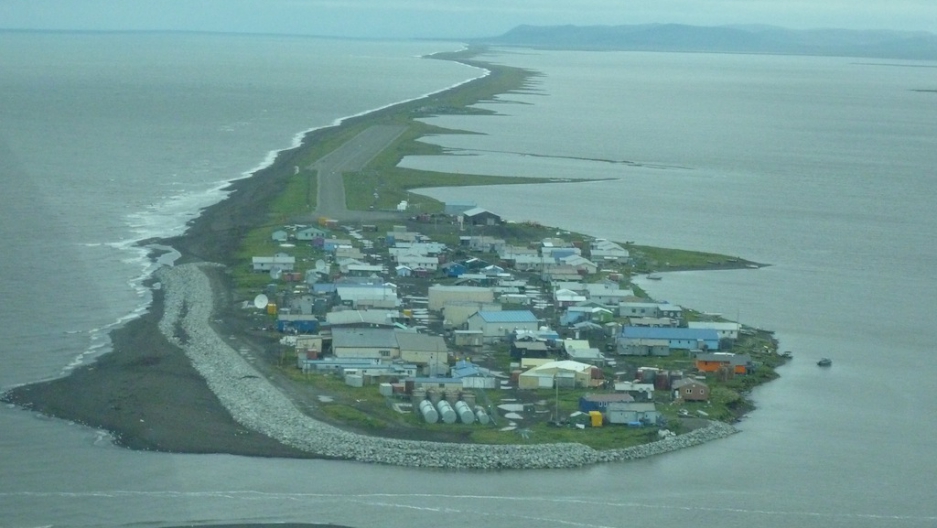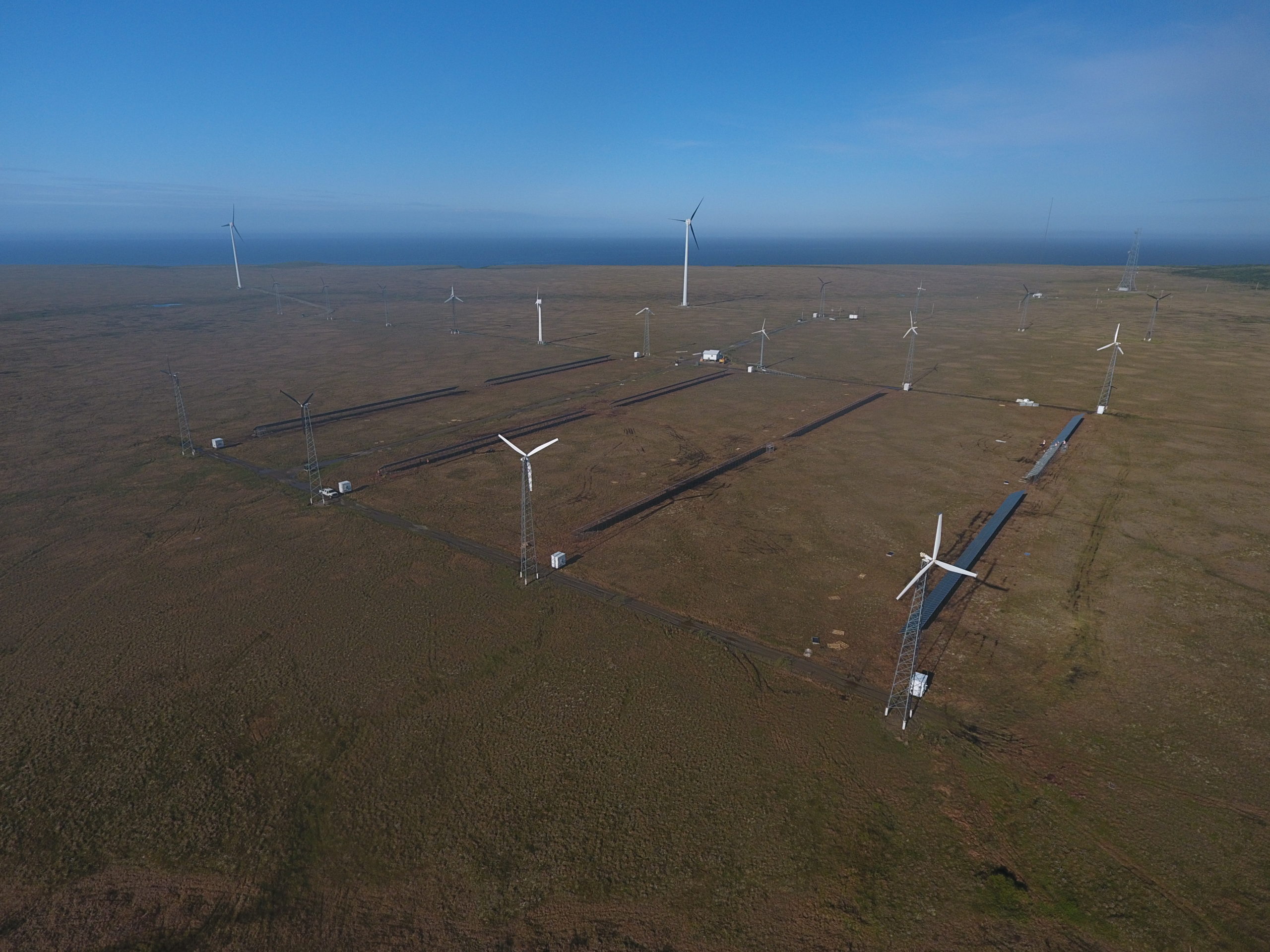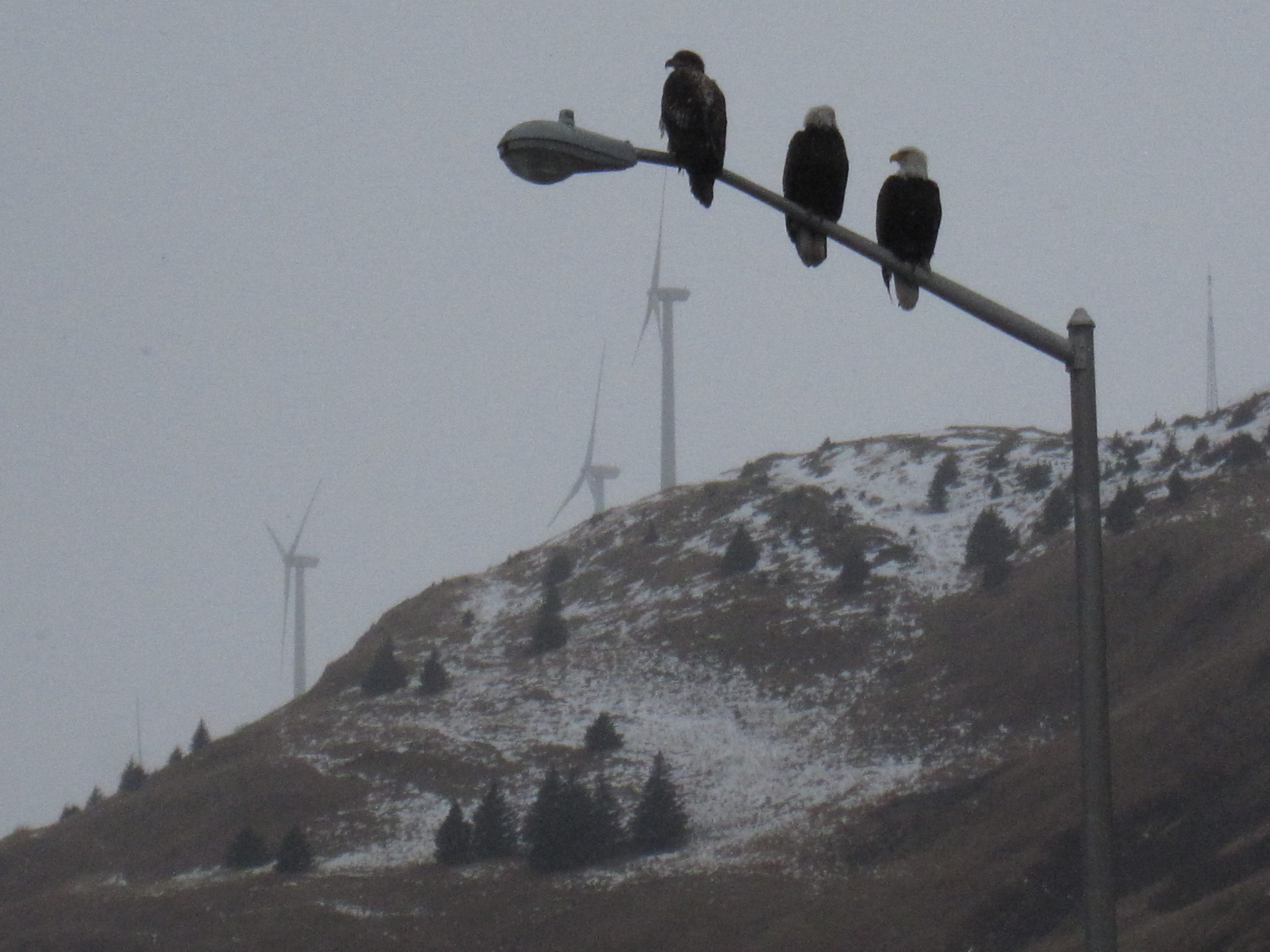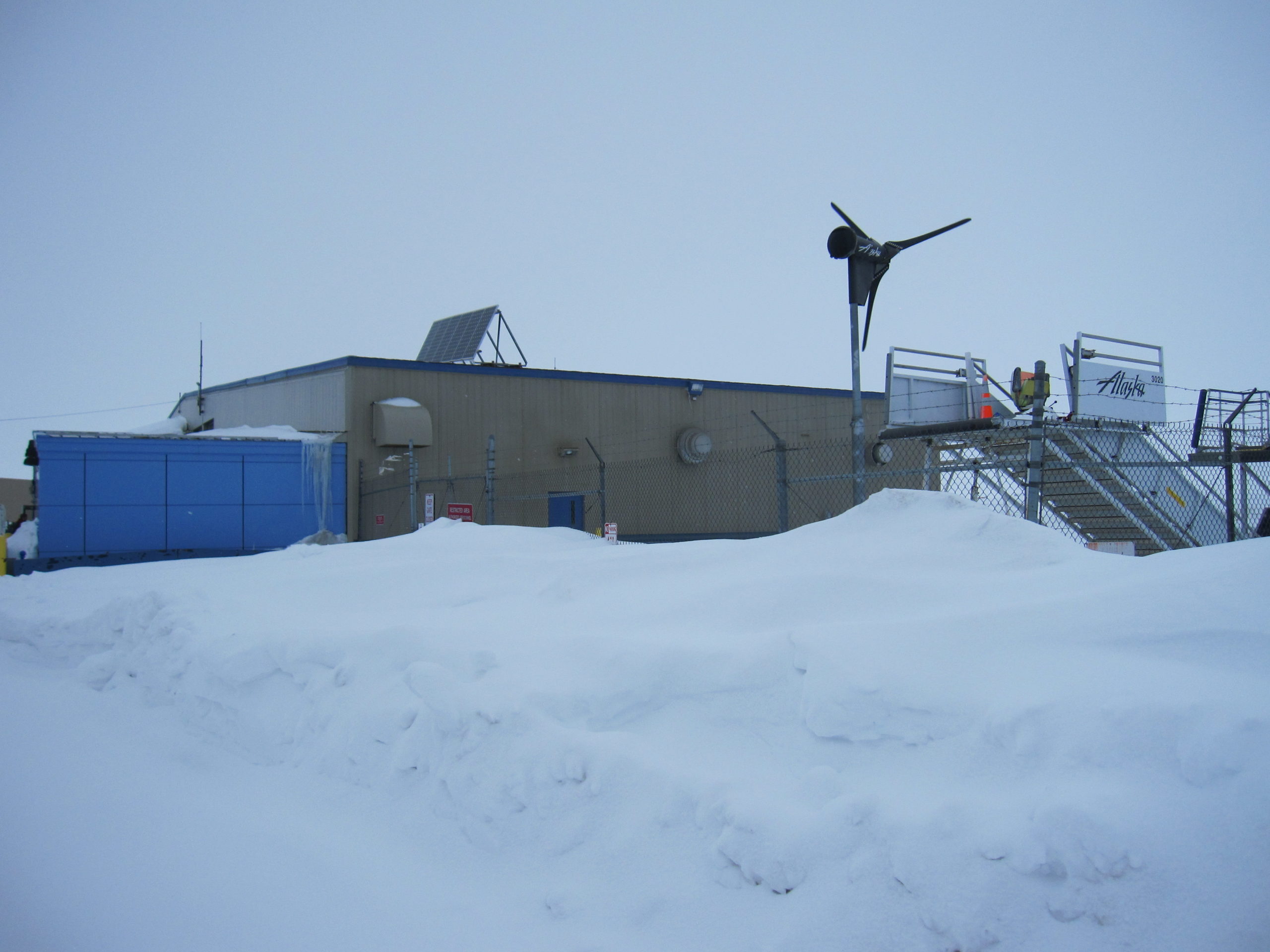Alaska’s experience shows benefits — and challenges — of wind energy in the Arctic
One of the biggest challenges is converting wind energy into heat.

Arctic renewable energy has the potential for a global impact, but stories of energy transformation in the region are often overshadowed. For the month of September, ArcticToday is launching a special focus on renewable energy in the Arctic and this piece is part of that coverage. Find the full series here, or subscribe to our daily newsletter and follow us on Facebook and Twitter to be the first to read new installments.
The Inupiat village of Kivalina in northwestern Alaska is sometimes invoked as a poster child of Arctic climate change.
Perched on a barrier island that is rapidly eroding as waves roll in from an increasingly ice-scarce Chukchi Sea, Kivalina has consistently ranked as one of the Alaska communities in most dire need of complete relocation.
So it is fitting that residents of Kivalina, struggling with the effects of climate change caused by fossil fuel emissions, are considering a source of renewable energy to power what they hope will be a new home.
It turns out that seven miles northeast of the current village, right at the preferred site for a new village is Kisimigiuktuk Hill, a hotspot for wind and potential wind energy. At K-Hill, as it is known, mean annual winds are 7.94 miles an hour, a “superb” resource, according to a consultant hired by the borough.
The K-Hill site has “one of the best wind resources in the whole region,“ said Ingemar Mathiasson, energy manager for the Northwest Arctic Borough.
Even in a state known for its early adoption of wind energy in rural regions, the Northwest Arctic Borough stands out as a leader.
Kotzebue, the region’s population hub, installed its first turbines in 1997, notes Chris Rose, executive director of the Renewable Energy Alaska Project, or REAP.

There are economic reasons to move to wind and other renewable energy sources — extremely high rates for electricity, uncertainties about diesel prices, extra costs of transporting and storing diesel, for example.
But incentives go beyond economics.
“People do want the cleaner environment. A lot of people want to sign onto the solution,” Mathiasson said.
Typically, wind energy is part of a mix, with power generated from turbines alternating with those generated from other sources. That is the case in the northwest Alaska and around the state. More recently, there has been a trend to combining wind with solar energy.
[Across Arctic North America, solar energy is gaining a foothold]
And in high latitudes, there are some special advantages that make wind energy attractive.
Winds are strongest in the winter, the season when sunlight is most scarce — making wind and solar complement each other, Rose said. And cold temperatures can boost energy production from wind turbines because colder air is denser than warm air.
One Northwest Alaska success story is the Inupiat village of Deering, which is combining energy from a wind system installed in 2016 with energy from solar panels installed in 2019.
“What we have done in Deering is to be able to shut down the generator for significant periods of time. There are not many places in the world that have been able to do that,” Mathiasson said.
K-Hill wind energy, though still in the conceptual phase, is inextricably linked to Kivalina’s future but inevitable relocation.
In a sense, relocation has already started. A road running inland to the preferred new village site is being completed. In the short term, the road will serve as an evacuation route if the current Kivalina location is overcome by flooding or some other emergency. In the medium term, it will provide access to what will become a new school — eventually an anchor for the new Kivalina. In the longer term, the road will be the overland route from the present-day village to the new village.
“It’s kind of piece by piece by piece,” Mathiasson said.

Beyond northwest Alaska, wind turbines are already generating energy in many parts of Alaska, from Anchorage, the biggest city, to some tiny Bering sea coastal and island villages. While the most notable successes are in coastal areas — where resources in spots are categorized as “excellent” or even “superb” — there are also operating wind turbines in inland sites far from the sea, said Rose. He cited Delta Junction, a community southeast of Fairbanks, as an example.
As of the end of 2017, Alaska had a total installed wind capacity of 67 megawatts, according to the Alaska Energy Authority’s most recent Renewable Energy Atlas.
One of the most notable Alaska wind success stories is the island community of Kodiak, where Alaska’s first megawatt turbines were installed in 2009 and later expanded. By 2014, Kodiak was able to combine hydropower with wind energy to become virtually free of any reliance on fossil fuels for its power generation.
There are some hurdles that need to be overcome to successfully produce wind energy in the Arctic. There are needs for upfront capital, for ongoing maintenance and for specialized expertise and equipment. There have been problems with icing on turbine blades, resulting in some new de-icing techniques. Installing big turbines can be especially challenging, “You need a crane, and the cost of a crane is sometimes exorbitant in some of these rural communities,” Rose said.

Challenges have tripped up some past Arctic wind projects. In Nunavut, for example, some communities began using wind in the 1990s but ran into equipment and technical difficulties. Now, with technology improving, Nunavut communities are again focused on use of wind energy. The territory-owned Qulliq Energy Corp. has ranked all 25 Nunavut communities for feasibility and come up with a shortlist of the five top sites for wind energy.
There is one major challenge that some communities are seeking to tackle: the conversion of wind energy to use beyond electricity generation. That will be critical to renewable-energy success, Rose said.
“In most rural communities, the cost of heating is a lot bigger issue than the cost of electricity,” he said.
Four Yup’ik villages in the lower Kuskokwim River area, banded together as the Chaninik Wind Group, have pursued that goal of converting wind power to heat. A U.S. Department of Energy-funded pilot project showed successes for storing wind energy for use as heat. The program uses “wind heat smart grids,” which are stand-alone community power grids linked to wind capacity intentionally built to be bigger than what would be used to produce electricity. Early results showed that village residential use of heating oil was cut by at least 30 percent for homes equipped with electric thermal storage units, according to a 2013 status report. Those storage units make use of ceramic bricks that retain heat.
The Tanadgusix Corp., or TDX, has a similar vision of using wind energy for heat. Owned by the Aleut people of St. Paul Island in the Bering Sea, the corporation has made wind energy a cornerstone of its business, with turbines spinning on the island and in the eastern Aleutian community of Sand Point.
“We come from an island in the Bering Sea, where legend says the wind was born,” the corporation says on its website.
A TDX renewable energy strategy released in late 2018 promotes boosted wind capacity as a way to substantially cut the need for imported fuel oil for heating. The strategy recommends the addition of six more turbines to the three already operating on St. Paul, for example; excess capacity and new storage could allow the Saint Paul School, the Sand Point school and the Sand Point clinic to cut their use of fuel oil by half, according to the strategy.
Alaska’s wind-energy successes have caught attention from other parts of the Arctic where communities are remote and disconnected from grids.
Canadian graduate students in 2018 brought lessons from Kotzebue to Inuvik in the Northwest Territories, for example, and Alaska’s experiences were featured prominently at a 2016 Arctic Renewable Energy Summit held in Nunavut.
But Rose sees the benefits of Alaska’s wind-energy experience going well to the south — to Africa and Asia, for example.
“I would say that beyond the Arctic, there are also lots of countries in the developing world that do have remote communities,” Rose said
There are even valuable lessons for well-developed urban areas, he said. Alaska’s microgrid experience “can be applied to places as urban as New York City,” he said. Urban areas are increasingly vulnerable, hit with more severe weather events and other stresses, he said. “They need to be resilient,” he said.